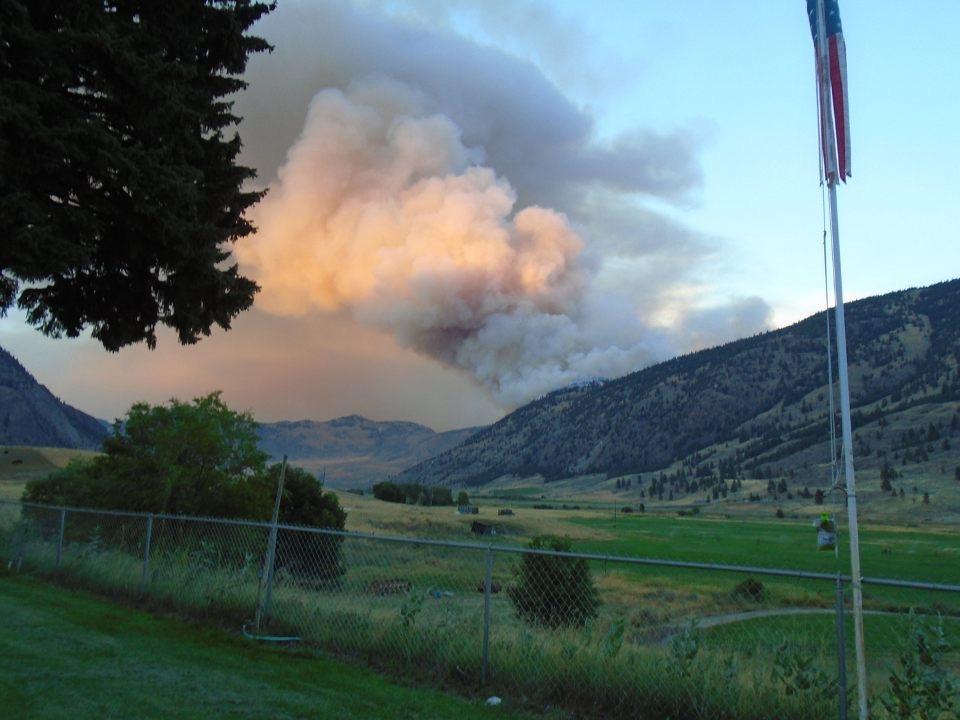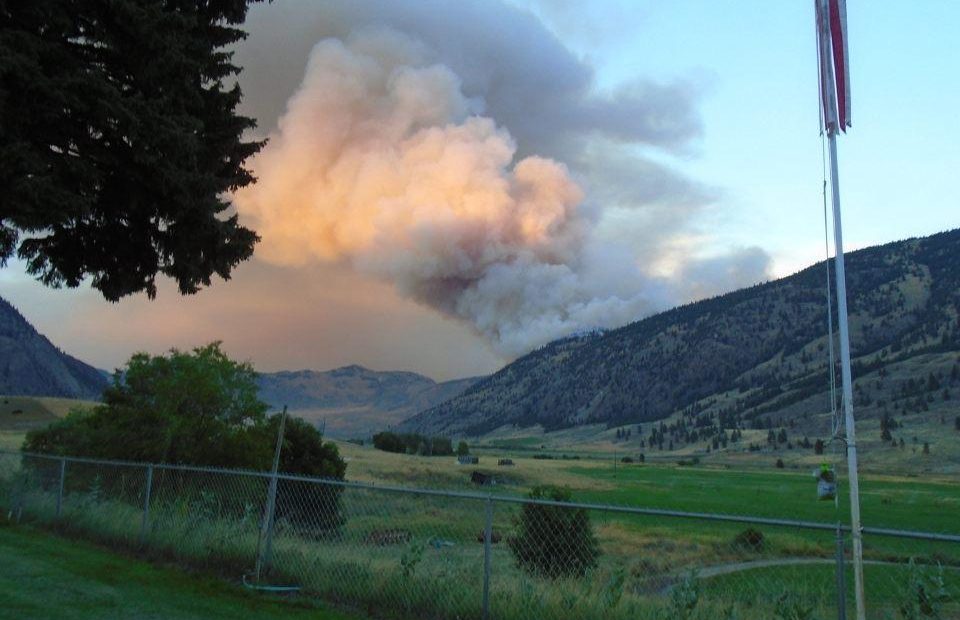
Crews Attack Fast-Moving Palmer Fire In Okanogan County, Eyeing Northward Growth Toward Border
Listen
QUICK LINKS/INFO:
-Red Cross Contact: 509-670-5331
–Okanogan Highlands Fire Watch
–Palmer Fire Info From InciWeb
-Previous Palmer Fire Coverage From NWPB
–Washington DNR Fire Information
Updated Aug. 20, 8:45 p.m. with new estimated fire size.
Firefighters are working to contain a large fire in north-central Washington. So far, the Palmer Fire has burned at least 11,000 acres and forced evacuations as winds pushed flames forward.
It’s expected to grow, pushing north, in the coming days.
Crews have been battling extreme fire behavior over the last few days, protecting property and people since the Palmer Fire first started on Tuesday, Aug. 18. It’s burning southeast of Oroville in Okanogan County.
Fire managers say crews have made “decent” progress on the fire’s southern edge – building in lines to stop its spread.
Winds continue to push flames north toward the Canadian border, which prompted Level 3 “get out now” evacuations near Palmer Lake.
Cooler temperatures on Thursday may help calm the fire, said public information officer Isabelle Hoygaard.
“That’s going to really help our crews to build that line around the fire and stop it’s progression,” Hoygaard said Thursday afternoon.
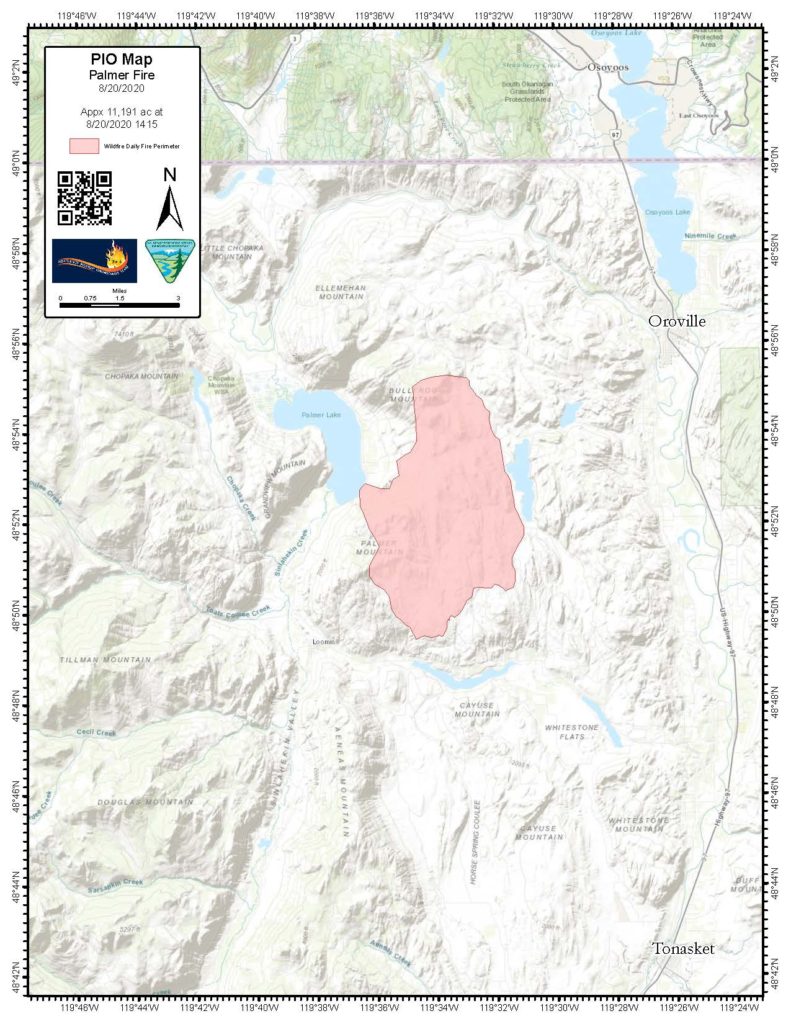
The footprint of the Palmer Fire burn area between Palmer Lake and Waanacut Lake southwest of Oroville, as of Aug. 20, 2020. Courtesy of InciWeb
But winds are predicted to pick up Friday, pushing the fire north and making it harder to fight in difficult terrain, according to state fire meteorologist Josh Clark. Forecasts show sustained winds up to 20 mph, with gusts from 25 to 40 mph in the late afternoon and evening Friday.
“Winds and terrain will align to make the flow of wind a lot worse,” Clark said.
Relative humidity will be slightly up, which helps make fire behavior less extreme, but it’s not that much better than it has been the past couple days, Clark said.
Ready To Burn
A big concern is that vegetation is ready to burn. Clark says the region where the Palmer Fire is burning is “missing four inches of rain” since last October. With “exceptional” dryness, the last month has seen only 10% of normal precipitation. Combine that with much warmer temperatures in the last several weeks.
“Our vegetation in that area, our grasses, our shrubs, and even our timber are trending below normal in regards to their moisture content,” he said. “So they’re all much drier than we would see this time of year in a normal fire season.”
Vegetation across the Inland Northwest is also very dry. Clark said that’s why it’s critical for people to avoid starting wildfires.
Smoke is expected to shift from the east toward Spokane to northward toward British Columbia. Winds from the southwest will push smoke from Oregon.
British Columbia fire agencies are aware that the Palmer Fire is heading toward the U.S.-Canada border. Hoygaard says firefighters north of the border will traditionally make a line to help stop the fire’s progression, once they’re aware it’s heading that way.
Stretched Thin
With large fires across the West and difficulties with the COVID-19 pandemic, initial attack forces had been stretched thin on the Palmer Fire. National Guard troops were able to help firefighting efforts after Gov. Jay Inlsee signed an emergency declaration Wednesday.
“On our fire, we got additional aerial resources,” Hoygaard said. “Forty-eight hours (after it began), we have a lot of crews right now. We’ve gotten a lot of crews from around the region to help combat this fire.”
Hoygaard said crews hope to catch the north end of the fire. If that doesn’t happen, more Level 3 evacuations may be necessary.
Fire managers will know more after about the number of homes and buildings that have burned after Thursday evening.
The Red Cross is offering shelter to anyone who has had to evacuate. Farm animals can be taken to the Tonasket Rodeo grounds. Anyone needing Red Cross assistance can call 509-670-5331.
A local group on Facebook, Okanogan Highlands Fire Watch, is also coordinating information and resources for affected residents.
Related Stories:
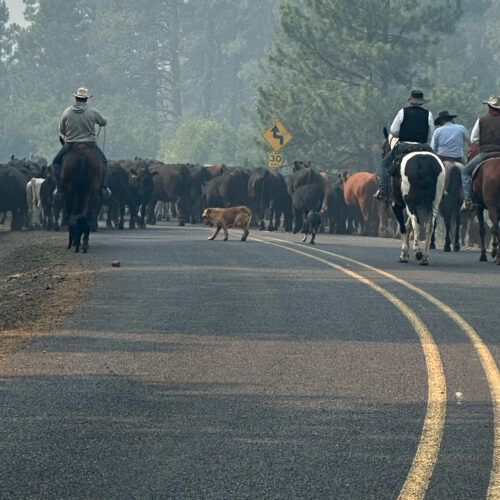
Burnt over cattle and lands: In southeast Oregon, grief-stricken ranchers are exhausted and frustrated by wildfires
Moving cattle out of a forest recently outside of Burns, Oregon. (Credit: Sabrina Maki) Listen (Runtime 4:33) Read Exhaustion and frustration: Ranchers in southeast Oregon are battling wildfire. Like many
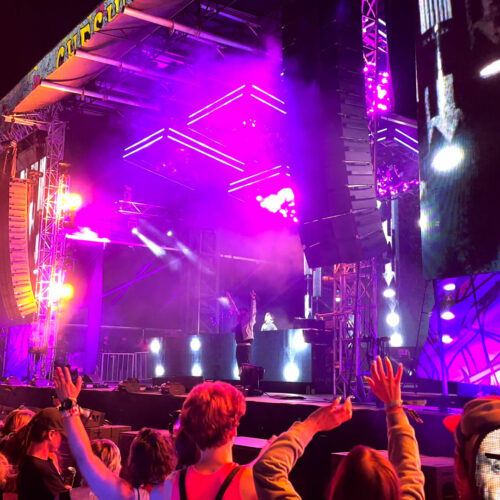
Fire at Odesza Gorge concert lasted for five minutes, law enforcement officials say
This file photo from June 17, 2023, shows Sub Focus performing at the Gorge Amphitheatre. (Credit: Northwest News Network file) Listen (Runtime :53) Read This past holiday weekend turned fiery
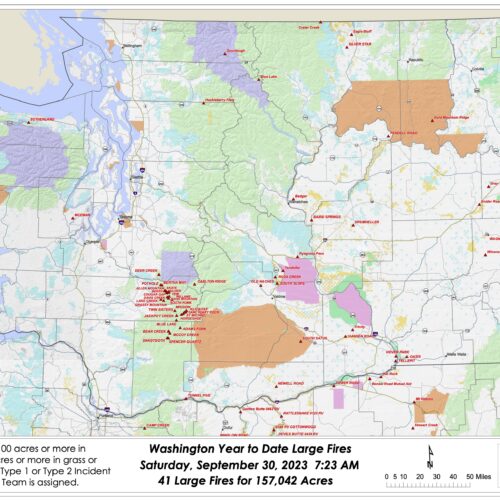
What impacts did wildfires have on the Northwest this summer?
Autumn has knocked on our doors and crossed our thresholds. With its arrival comes wetter, colder, darker days — perhaps some pumpkin-flavored treats as well — and hopefully, fewer wildfires. Heavy recent rainfall has dropped the wildfire potential outlook down to normal for the Northwest, according to the National Significant Wildland Fire Potential Outlook.
So, how did this summer fare compared to past fire seasons?

